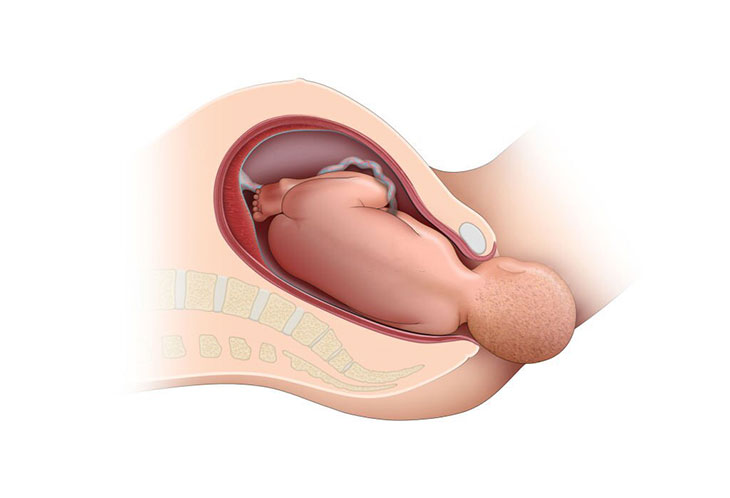As childbirth gets closer, some women may need labor induction for many reasons.
They include overdue pregnancy, medical complications, fetal distress, and certain health risks to the mother or baby.
But is labor induction safe? Let’s look at the safety of labor induction for both mom and baby in this post.
Understanding the pros and cons of this practice can help you make the best decision during this important time.
What Is Labor Induction?

Labor induction means helping the birth process start on purpose using medical methods.
It happens when labor doesn’t begin naturally or when there are health concerns for the mom or baby.
When induction is done without medical reasons, it’s called elective. It is used to make labor and delivery happen when needed for the safety of both mom and baby.
Some people may choose induction for convenience, but it’s important to consider the potential risks and benefits.
Is Labor Induction Safe?
Yes. Labor induction is generally safe. However, it might carry complications for the mothers, such as prolonged labor, uterine rupture, and infection risk.
It also poses health risks for the baby, like breathing and feeding difficulties.
Complications During Delivery
Fetal distress
Labor induction involves artificially stimulating contractions, which may lead to fetal distress.
Fetal distress occurs when the baby’s oxygen supply is affected, resulting in an abnormal heart rate. This can be concerning for the well-being of the baby during delivery.
Uterine rupture
Medications used for labor induction can cause uterine hyperstimulation or uterine rupture. It’s caused by overly strong and frequent contractions.
This condition can lead to decreased oxygen supply to the baby, a severe and life-threatening complication.
Cesarean section
If labor induction fails, a cesarean section may be necessary. The risk of cesarean delivery is higher in induced labor than in spontaneous labor.
Extended Staying In Hospital

Prolonged labor process
Inducing labor can take longer than natural labor, as the body is artificially stimulated to begin contractions.
It can increase the risk of maternal exhaustion. Thus, it’s difficult for the mother to push during delivery effectively.
Besides, it also lowers the dilation and effacement of the cervix. This slower progress can retain the mother in the hospital for an extended period until delivery is completed.
Increased monitoring
To be induced during pregnancy requires closer monitoring by healthcare providers to ensure the safety of both the mother and the baby.
Frequent monitoring of contractions and the baby’s heart rate may extend the hospital stay.
Increased interventions
Induced contractions can make it hard to position the baby. Thus, labor induction may need interventions such as forceps or vacuum extraction to support delivery.
These side effects of labor induction might prolong the delivery process.
Infection Risk
Breaking the amniotic sac
A doctor manually breaks the amniotic sac when labor is induced to initiate contractions. This procedure is known as artificial rupture of membranes (AROM).
It creates an opening in the protective sac surrounding the baby.
The breach in the amniotic sac can expose the mother and the baby to the risk of infection. It can allow bacteria from the vaginal and perineal area to enter the uterus.
Weakening immune system
The labor process and the use of medications during induction can stress the mother’s body and weaken her immune system.
A weakened immune response makes the mother more susceptible to infections.
Postpartum infections
After delivery, the mother’s body undergoes significant changes, making her more vulnerable to infections. These postpartum infections can occur in:
- Uterus (endometritis)
- Urinary tract (urinary tract infection)
- At the site of a cesarean incision (surgical wound infection)
More Pain Medicine Required
Stronger and more frequent contractions
Doctors will apply synthetic hormones like oxytocin to stimulate contractions in mothers.
These artificial contractions can be more forceful and occur more frequently than natural contractions during spontaneous labor.
As a result, the pain during induced labor can be more intense.
Emotional stress
Another risk of inducing labor is stress. Feeling anxious and stressed can worsen the pain, making it more difficult to manage without pain relief.
Epidural anesthesia
Because induced labor can be more painful, there’s a higher chance that someone might ask for an epidural or other pain-relief medicine.
An epidural is when a thin tube with pain medicine is put in the lower back to block the pain from the uterus and cervix.
But it can have side effects, and it might make it harder for the pregnant person to move during labor.
Increase Baby’s Health Issues
Neonatal intensive care unit (NICU) stay
Babies born prematurely may need specialized care in the NICU to support their health and development. The NICU stay can be stressful for both the baby and the parents.
Respiratory issues
Babies born before their due date might have underdeveloped lungs, making it challenging for them to breathe properly.
Respiratory problems can lead to the need for respiratory support and oxygen therapy.
Feeding difficulties
Premature babies may have difficulties with sucking and swallowing, affecting their feeding ability. As a result, they might need tube feeding or special feeding techniques.
Developmental concerns
Premature birth may lead to health issues and increase the risk of long-term developmental problems, such as learning disabilities or delayed milestones.
Jaundice
Some studies suggest that labor induction using oxytocin can be associated with higher bilirubin levels. This might give rise to jaundice in newborns.
Although jaundice is treatable, it can result in a longer hospital stay and require phototherapy or other interventions.
FAQs

Is Induction Or C-Section Safer?
Induction is generally safe when there are valid medical reasons.
However, safety also depends on the individual situation because C-sections can lead to stronger contractions and might not work in some cases.
A C-section is planned and is usually safe when medically necessary. Yet, this surgical procedure may have some potential risks, such as:
- Infection
- Bleeding
- Blood clots
- Adverse reactions to anesthesia
- Injury to organs
Longer recovery time than vaginal delivery
The healthcare provider will choose the best based on the mother and baby’s specific needs and health conditions.
Is Inducing At 39 Weeks Safe?
Yes. Inducing labor at 39 weeks is generally safe for most pregnancies. Most research shows that it doesn’t increase the risks of induction during birth.
However, it’s crucial not to induce labor before 39 weeks. Babies born earlier may have more issues, such as:
- Problems with breathing, feeding, and maintaining body temperature
- Complications of induction
What Week Is Safest To Be Induced?
For women with low-risk pregnancies, the safest time to consider inducing labor is at 39 to 40 weeks of pregnancy.
Inducing labor during this period can help reduce the chances of certain risks like:
- Stillbirth
- Having a large baby
- Developing high blood pressure as the pregnancy progresses
Besides, inducing labor at these times may lower the chance of needing a C-section and does not increase risks for the baby.
Conclusion
Is labor induction safe? Yes. It’s usually safe when there are valid medical reasons, and it’s done at the right time.
It can help when a pregnancy goes past the due date or when there are health concerns for the mom or baby.Yet, there are some complications and risks of inducing labor.
For the mom, it can lead to infection and uterine rupture. Besides, the baby may have breathing, feeding problems, and jaundice.
Thus, it’s best to discuss with your doctors to decide the best choice.
